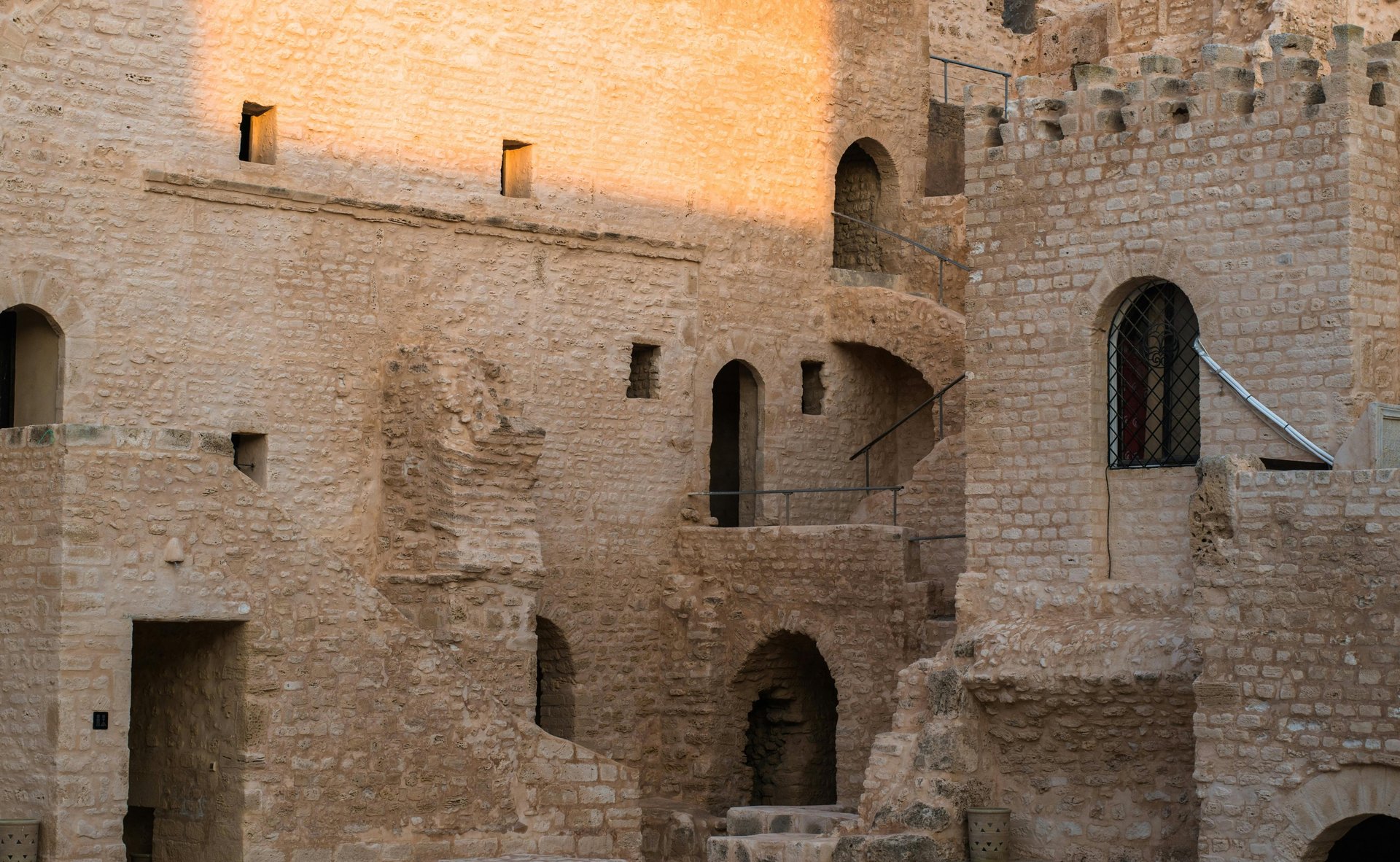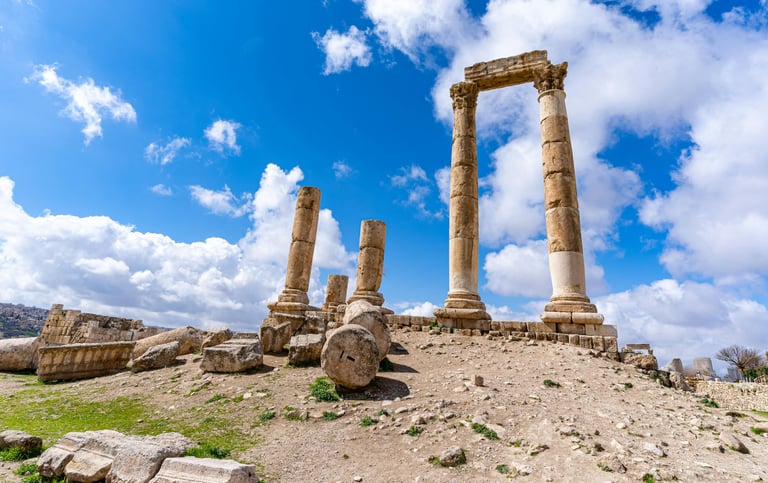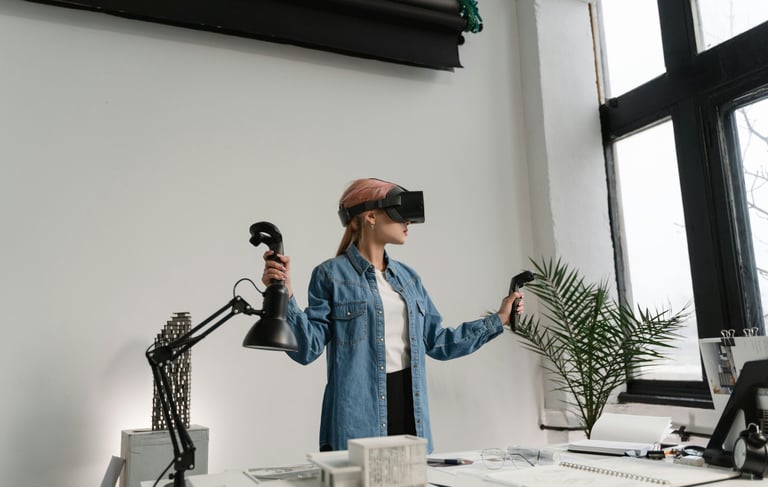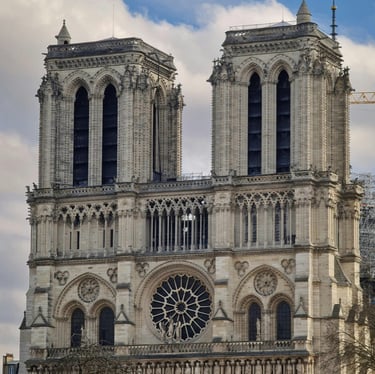
Between Threats and Extinction: Can We Preserve Our Heritage Through Sustainable Documentation?
What is more painful than destruction is that many of these sites were not scientifically and accurately documented before they collapsed, burying their architectural and symbolic details forever.
Construct Vision Team
6/16/20256 min read

Sites We’ve Lost: Heritage That Vanished Before Being Documented
History doesn’t disappear only under bombs and earthquakes; it also fades when we fail to preserve it. Many archaeological sites in the Arab world and beyond were invaluable architectural and artistic masterpieces, yet the absence of prior documentation led to their disappearance without even leaving a digital trace.
Aleppo – Syria
One of the greatest ancient cities in the East, large parts of it were destroyed due to repeated shelling and explosions. Despite some photos and models, there was no comprehensive 3D documentation of most architectural elements before their destruction, complicating later restoration efforts.
Al-Nuri Mosque – Mosul, Iraq
The Al-Hadba Minaret, standing since the 12th century, was reduced to rubble in a 2017 explosion. Despite attempts at its "digital restoration," pre-destruction documentation was relatively weak, making the task of architects and researchers in cultural and architectural revival challenging.
Old City of Sanaa – Yemen
Facing multiple threats—from neglect to war and climate change—large parts of its architectural fabric have been damaged. There are still no accurate digital maps or comprehensive architectural surveys covering it, despite being on UNESCO’s World Heritage List.
Another Example
The 2023 Marrakech earthquake caused the collapse of parts of historic cities in the High Atlas, and those sites were not sufficiently documented digitally.
In contrast, the fire at Notre-Dame Cathedral (France, 2019) served as a global lesson: the laser-based digital documentation completed before the fire enabled precise restoration efforts.
The loss isn’t just in the falling stones but in the knowledge associated with them. If these sites had been documented accurately and early, it would have been possible to "revive" parts of them digitally or at least pass them on to future generations in a form closer to reality.
2. Digital and Laser Documentation
In recent decades, the introduction of 3D Laser Scanning and Photogrammetry technologies has brought about a real revolution in this field.
3D Laser Scanning
Relies on a device that emits laser pulses measuring millions of points per second to create a precise point cloud representing the actual shape of a building or site.
• Accuracy: Up to ±2 mm
• Speed: Documents hundreds of square meters in hours
• Results: A point cloud suitable for analysis, modeling, and simulation
Photogrammetry
Relies on capturing the site from multiple angles and merging images using algorithms to create a 3D model. Today, it is even used with drones to obtain data from high altitudes and large areas.
• Advantages: Lower cost – Ease of use
• Limitations: Less accurate than laser – Affected by light and shadows
3. Artificial Intelligence and Predictive Modeling
Artificial intelligence technologies have brought remarkable advancements in analyzing architectural data, such as:
• Automatic material differentiation (stone, wood, clay, etc.)
• Detection of decorative patterns or structural damage
• Reconstruction of missing parts using predictive algorithms (e.g., projects using GANs to reconstruct missing architectural elements).
4. Heritage Building Information Modeling (HBIM)
The latest trend combines point clouds with advanced digital modeling to produce an intelligent parametric model containing geometric, historical, structural, and climatic information. It can be used for:
• Virtual restoration
• Climate simulation
• Scheduling and maintenance
• Long-term site management
Today, documentation is not just drawing or photography but a scientific process based on precise data and updatable digital modeling, opening new horizons for more sustainable and integrated cultural heritage preservation.


Between Challenges and Opportunities... The Future of Heritage Documentation
Current Challenges
Despite technological advancements, architectural and archaeological heritage documentation faces multiple challenges, varying by geographic, political, and cultural context:
Absence of Institutional Policies
• Many countries lack comprehensive national plans for inventorying and documenting heritage.
• Documentation is often completed through individual or scattered academic efforts, resulting in non-unified or nationally unusable data.
Lack of Funding and Equipment
• Advanced tools like laser scanners or HBIM software are costly.
• Some heritage entities still rely on outdated tools due to limited budgets.
Limited Qualified Personnel
• Shortage of digital documentation specialists and absence of systematic training programs linking archaeological, architectural, and technical knowledge.
• In some cases, buildings are documented without sufficient understanding of their symbolic or historical value.
Natural and Human Threats
• Natural disasters and armed conflicts pose direct threats to sites before they can be documented.
• Often, there isn’t enough time to document a site before it is lost or damaged.
Future Opportunities
Shift Toward Open and Community-Based Documentation
• Emergence of participatory initiatives like Open Heritage 3D, allowing the upload and use of open-source 3D models of archaeological sites worldwide.
• Empowering local communities to contribute to digital data collection (photos, stories, testimonies) to complement official documentation.
Artificial Intelligence and Big Data
• Using machine learning to classify architectural forms, track temporal deterioration, or predict preventive maintenance scenarios.
• Time-Based Analysis systems help link historical information with the current physical state of a building.
3D Printing in Restoration
• Using digital models from documentation to print replacement or educational architectural elements.
• Major projects like the reconstruction of the Arch of Triumph in Palmyra using 3D stone printing, based on pre-destruction digital documentation.
Digital Twin
• A new trend in digital preservation linking a physical building with its virtual counterpart, recording temporal changes and activities, enabling real-time monitoring of structural and health conditions.
The future of heritage documentation is no longer confined to archiving but is linked to managing heritage knowledge and achieving cultural sustainability through data analysis, community participation, and advanced modeling. The challenges are significant, but future tools open unprecedented horizons for preserving a rich and diverse architectural identity.
Finally, Do We Have the Luxury of Waiting?
Amid the silently vanished cities and sites still resisting oblivion, heritage documentation stands as the last line of defense in our battle against erasure. The issue is no longer an academic luxury or a local cultural concern but has become a simultaneous human, engineering, and technological challenge.
In an era where documentation tools advance as quickly as threats, slow response means irreversible loss. Documenting historical and architectural landmarks is not just an attempt to freeze the past but a smart investment in a future capable of learning from its roots and innovating from its memory.
We now need comprehensive systems combining knowledge and expertise, digitization and participation, technology and identity. What is required today is not just precise tools but conscious will and policies that protect, train, and empower.
Do we have the intellectual courage to turn documentation into a societal culture, a national plan, and a tool for survival?


Share the post
Subscribe to our newsletters:


Documentation Is Not a Luxury… But a Civilizational Necessity (The Architectural and Cultural Meaning of Documentation)
Documenting historical landmarks is not limited to preserving the external appearance of old buildings; it involves a deep architectural analysis of materials, functions, techniques, and the cultural contexts in which these landmarks were born.
Preserving Identity
Ancient architecture reflects the philosophy of place and time. Every arch, window, and ornament carries cultural and spiritual symbols. Precise documentation is the only way to ensure this identity is not lost.
Cumulative Knowledge in Architecture
Traditional architecture holds unique technical and climatic lessons: natural ventilation, use of local materials, shading systems… Documenting these allows us to integrate them into modern architectural solutions, especially in addressing climate change.
Scientific Reference for Restoration
If a site is damaged or collapses, it cannot be rebuilt or restored unless it was previously documented with precision. Here, accuracy is not only aesthetic but also structural and cultural.
Symbolic and Tourism Capital
Well-documented historical sites gain global value that can be sustainably marketed culturally and touristically, opening new doors for local development.
Archive of Collective Memory
Buildings are not just stones but physical records of a people’s memory. Documenting them contributes to forming a visual and digital archive that preserves this memory from distortion or fading.
Documentation is the vital link between the past and the future. It is the means by which we preserve the spirit of a place and invest in a future more aware of our identity.
How Do We Document? The Evolution of Methods from Hand Drawing to Cloud Modeling
1. Traditional Manual Documentation
The primary method for centuries, relying on precise scaled drawings and measurements using simple tools like measuring tapes, rulers, and levels. Despite its simplicity, it requires high skill and consumes significant time, and is prone to human error if the person lacks expertise and extreme precision.
Tools:
• Manual measurement tools and traditional simple devices.
• Two-dimensional drawings (2D Drafting).
• Traditional photographic documentation.
Strengths: Simplicity – Accessibility – Low cost.
Weaknesses: Limited accuracy – Time-consuming – Inability to model and analyze digitally.




New Platform Coming Soon!
Join the Expert Community and Get Exclusive Access


